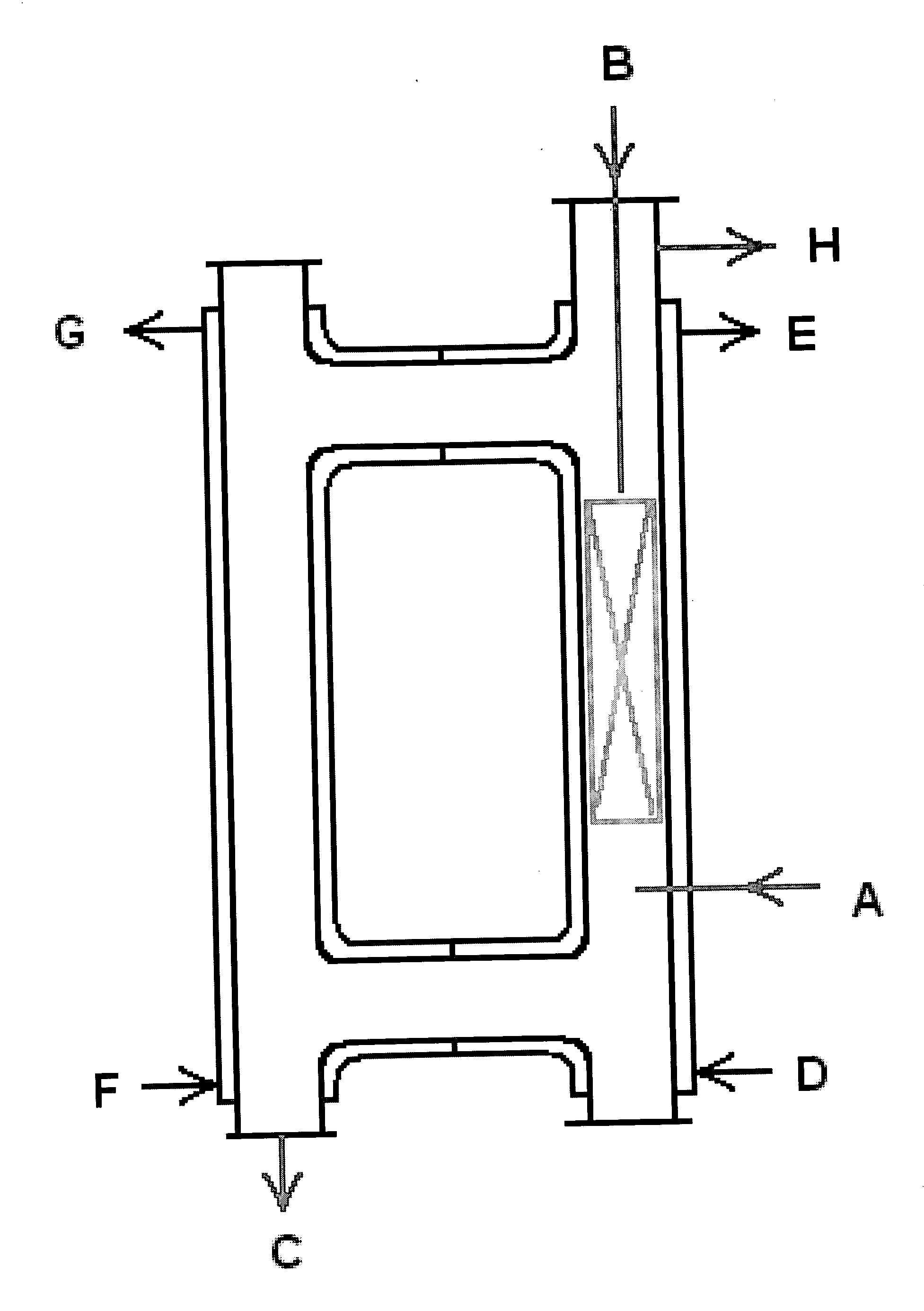Method and apparatus for manufacturing nitrogen trifluoride
- Summary
- Abstract
- Description
- Claims
- Application Information
AI Technical Summary
Benefits of technology
Problems solved by technology
Method used
Image
Examples
Embodiment Construction
[0059] The preferred embodiment of the method and apparatus for producing NF.sub.3 set forth in the summary above is a closed-loop, stainless steel reactor of approximately 0.616 cubic meters with an inner diameter of approximately 8 inches employing one or more static mixing elements, preferably about 8 to 10 static mixing elements, between points A and B shown on FIG. 1 across approximately 30%-40% of the length of the reactor, operating at a temperature of approximately 5.degree.C. higher than the melting point of the AAF, but in all cases less than approximately 140.degree.C., optimally, approximately 120.degree.C. to 137.degree.C. The reactor operates at a pressure of 4 to 5 kilograms per square centimeter.
[0060] F.sub.2 is introduced at point A on FIG. 1. NH.sub.3 (ideally, high purity anhydrous ammonia) is introduced at point B of FIG. 1. The static mixing elements, optimally between 8 and 10, are located between points A and B on FIG. 1 across approximately 30%-40% of the l...
PUM
 Login to View More
Login to View More Abstract
Description
Claims
Application Information
 Login to View More
Login to View More - R&D
- Intellectual Property
- Life Sciences
- Materials
- Tech Scout
- Unparalleled Data Quality
- Higher Quality Content
- 60% Fewer Hallucinations
Browse by: Latest US Patents, China's latest patents, Technical Efficacy Thesaurus, Application Domain, Technology Topic, Popular Technical Reports.
© 2025 PatSnap. All rights reserved.Legal|Privacy policy|Modern Slavery Act Transparency Statement|Sitemap|About US| Contact US: help@patsnap.com

